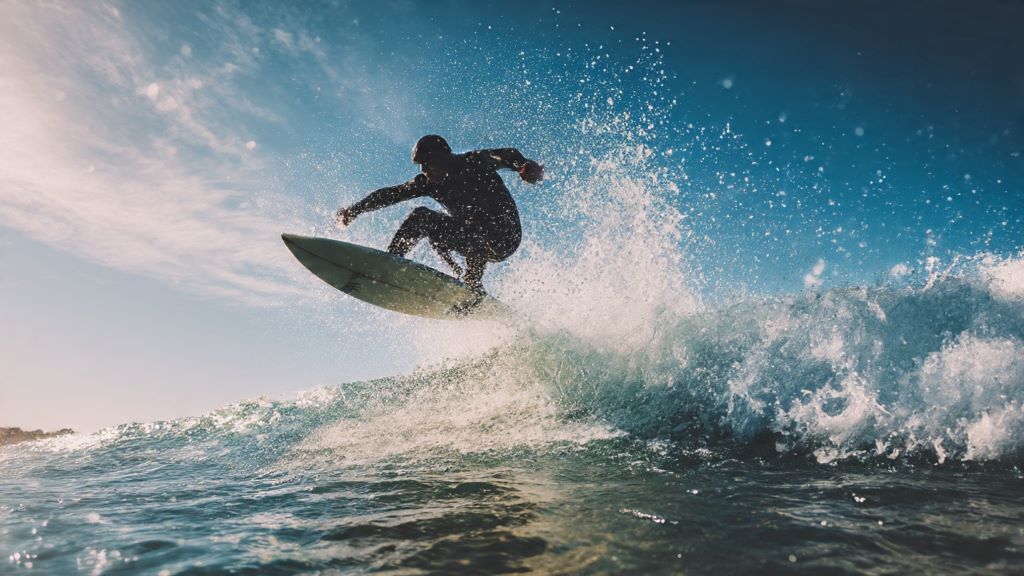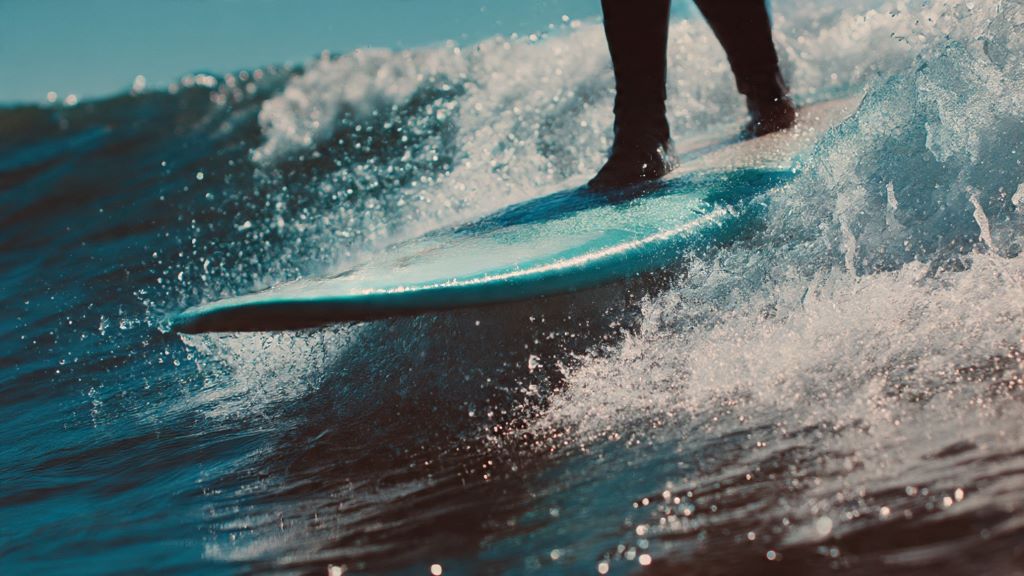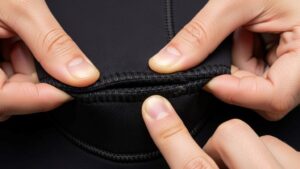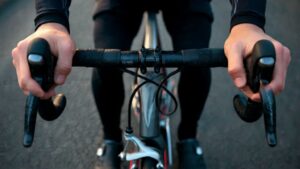How to Do a “Chop Hop” on a Surfboard

Surfing continues to evolve with new tricks and techniques that push the boundaries of what’s possible on a wave. One exciting move gaining popularity among intermediate and advanced surfers is the chop hop. This dynamic maneuver combines timing, balance, and board control to create an impressive aerial moment. Whether you’re looking to expand your trick repertoire or simply want to add more flair to your surfing style, mastering the chop hop can elevate your performance. With the right guidance and quality equipment from Cool Surfing Gear, you’ll be ready to take on this challenging technique.
Understanding the Chop Hop Technique
The chop hop is a progression move that sits between basic turns and full aerial maneuvers. Essentially, it involves using the choppy section of a wave to launch your board slightly off the water’s surface. Unlike a full aerial, the chop hop keeps you relatively close to the wave face. However, it still requires precise timing and body positioning. The move gets its name from the “chop” or bumpy water conditions that provide the natural ramp for your launch.
Many surfers find the surfing chophouse technique challenging at first because it demands quick reactions and confidence. The choppy conditions that make this move possible can also make it unpredictable. Therefore, understanding wave dynamics becomes crucial before attempting this trick. Additionally, having a board with the right amount of rocker and tail design will significantly impact your success rate.
Preparing Your Surfboard and Mindset
Before attempting a chop hop, ensure your surfboard is appropriate for the maneuver. A shorter board with responsive rails works best for this trick. The board should be light enough to lift off the water but stable enough to land smoothly. Furthermore, check your fin setup. Thruster or quad configurations typically offer the best control during the launch and landing phases.
Mental preparation matters just as much as physical readiness. Start by watching experienced surfers perform chop hops. Notice how they position their bodies and time their movements with the wave’s energy. Visualization techniques can help you mentally rehearse the move before hitting the water. Moreover, accepting that you’ll fall multiple times during the learning process will reduce anxiety and help you progress faster.
Finding the Right Wave Conditions
Selecting appropriate wave conditions is critical for learning the chop hop. Look for waves with visible chop or texture on the face. These bumpy sections provide natural launch points. Small to medium-sized waves between two and four feet work best for beginners. Larger waves can overwhelm you while learning the basic mechanics.
Wind conditions also play a significant role. Light onshore winds create the choppy texture you need. However, too much wind can make controlling your board difficult. According to Surfline, understanding local wind patterns and wave forecasts helps surfers choose optimal conditions for practicing new maneuvers. Pay attention to the tide as well, since different tidal phases affect wave shape and chop intensity.
Step-by-Step Execution of the Chop Hop
Start by positioning yourself in the wave’s power pocket. As you approach a choppy section, compress your body by bending your knees and lowering your center of gravity. This compression creates stored energy that you’ll release during the hop. Keep your weight centered over the board and your eyes focused on the section ahead.
Next, as you reach the chop, explosively extend your legs while simultaneously pulling up on your board with your back foot. This upward motion should feel like a small jump. Your front foot guides the direction while your back foot provides the lift. The board will leave the water’s surface briefly. During this airborne moment, keep your body compact and balanced.
The landing requires precise timing and control. As gravity pulls you back down, spot your landing zone on the wave face. Bend your knees to absorb the impact and maintain a low center of gravity. Your weight should be slightly forward to prevent the tail from digging in. Additionally, keep your arms out for balance throughout the entire sequence.

Common Mistakes and How to Avoid Them
Many surfers struggle with timing when learning the chop hop. Attempting the move too early or too late results in either missing the chop entirely or losing speed. Practice reading wave faces and identifying the optimal launch point. However, don’t overthink the timing. Sometimes instinct and muscle memory work better than conscious thought.
Another frequent error involves leaning too far back during takeoff. This causes the nose to lift excessively, leading to unstable flight and difficult landings. Instead, maintain a centered stance with equal pressure through both feet. Your body should rise vertically rather than tilting backward.
Landing with stiff legs is perhaps the most common mistake. This rigid approach causes harsh impacts that can throw you off balance. Therefore, always keep your knees bent and ready to flex upon landing. Think of your legs as shock absorbers that cushion the board’s return to the wave.
Progressing Your Chop Hop Skills
Once you’ve mastered the basic chop hop, several progressions can enhance the move. Try adding a slight rotation during the airborne phase. A 90-degree turn creates visual interest and demonstrates board control. Furthermore, experiment with different grab techniques. Reaching down to touch your board during the hop adds style points.
Combining the chop hop with other maneuvers creates fluid sequences. For instance, execute a chop hop immediately after a bottom turn. This combination maintains speed and momentum throughout your ride. Moreover, linking multiple chop hops on the same wave showcases advanced skill and wave reading ability.
According to The Inertia, progression in surfing comes from consistent practice and incremental challenges. Set realistic goals for each session. Perhaps focus on landing three successful chop hops or attempting the move on slightly larger waves. Tracking your progress helps maintain motivation and identifies areas needing improvement.
Safety Considerations and Best Practices
Safety should always remain your top priority when learning new surfing techniques. The chop hop involves leaving the water’s surface, which increases injury risk. Always practice in areas free from other surfers, rocks, or shallow reef. Additionally, wear appropriate protective gear if you’re concerned about falls.
Know your limits and don’t push beyond your current skill level. If conditions seem too challenging, wait for another day. Surfing will always be there tomorrow. Furthermore, warm up properly before attempting explosive moves like the chop hop. Stretching and gentle paddling prepare your muscles for the demands ahead.
Consider working with a surf coach or experienced friend who can provide feedback. Sometimes an outside perspective identifies issues you can’t see yourself. Video analysis proves particularly valuable for understanding body positioning and timing. Modern waterproof cameras make capturing your sessions easier than ever.
Building Confidence Through Repetition
Mastering the chop hop requires patience and persistence. Your first attempts will likely feel awkward and uncoordinated. However, each try teaches your body the necessary movements. Start with small hops that barely leave the water. As confidence grows, increase the height and intensity gradually.
Practice the motion on land before entering the water. Stand on your board and rehearse the compression and extension movements. This dry land training builds muscle memory without the added challenge of moving water. Additionally, perform the movement slowly at first, focusing on proper form rather than speed.
Celebrate small victories along the way. Successfully timing one chop hop represents significant progress. Therefore, acknowledge your improvements rather than fixating on mistakes. Positive reinforcement keeps you motivated through the learning curve. Moreover, remember that even professional surfers spent countless hours perfecting this technique.
Equipment Considerations for Success
The right equipment significantly impacts your chop hop success rate. Board volume matters more than you might think. Too much volume makes the board sluggish and difficult to lift. However, insufficient volume reduces stability during landing. Finding the sweet spot depends on your weight and skill level.
Tail shape influences how the board responds during the hop. Squash tails provide stability, while rounded pin tails offer more maneuverability. Many surfers prefer a moderate rocker that balances between speed and lift capability. Furthermore, ensure your traction pad provides sufficient grip. Your back foot needs secure contact during the explosive extension phase.
Don’t overlook fin selection. Larger fins increase stability but reduce responsiveness. Smaller fins allow quicker movements but may feel loose during landing. Experiment with different combinations to find what works for your style. Quality equipment from reputable sources ensures reliability when you need it most.
Conclusion
Learning how to do a chop hop on a surfboard opens new dimensions in your surfing journey. This exciting maneuver combines technical skill with creative expression. While the learning curve presents challenges, consistent practice and proper technique lead to success. Remember to start with appropriate wave conditions and gradually build your confidence through repetition.
Focus on mastering the fundamentals before attempting advanced variations. Pay attention to timing, body positioning, and landing technique. Additionally, prioritize safety and know your limits. With dedication and patience, the chop hop will become a natural part of your surfing repertoire. The feeling of successfully launching and landing this move makes every practice session worthwhile.
Frequently Asked Questions
What size waves are best for learning the chop hop?
Small to medium waves between two and four feet work best for beginners learning the chop hop. These sizes provide enough power without being overwhelming. Additionally, look for waves with visible chop on the face that create natural launch points.
Do I need a special surfboard to perform a chop hop?
While any surfboard can technically perform a chop hop, shorter boards with responsive rails work best. A board between 5’6″ and 6’2″ typically offers the right balance of maneuverability and control. However, your regular shortboard should work fine for learning the basics.
How long does it take to learn the chop hop technique?
Learning timelines vary based on your current skill level and practice frequency. Most intermediate surfers can land their first successful chop hop within a few dedicated sessions. However, mastering the technique and performing it consistently may take several months of regular practice.
Can beginners attempt the chop hop move?
The chop hop is generally considered an intermediate to advanced maneuver. Beginners should first master basic turns, cutbacks, and wave positioning before attempting this trick. Building a strong foundation in fundamental surfing skills makes learning the chop hop much easier and safer.
What are the most common injuries from attempting chop hops?
Most injuries from chop hops result from awkward landings rather than the move itself. Ankle sprains, knee strains, and lower back discomfort are common. However, practicing proper technique, landing with bent knees, and knowing your limits significantly reduces injury risk.
Related Topics:
Paddle Board Slipping Cure: How to Stay Balanced and Confident on Your Board
Ditch the Wax: Real Solutions to Grip Problems in Surfing Without the Sticky Mess








